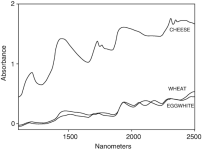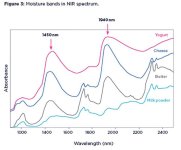Hello there! New here. I do special effects for tv commercials, largely for food photography. Here's what I'm trying to accomplish, and believe it or not, this is a real thing, that comes up. Imagine a hamburger commercial. Imagine a closeup of the square of cheese sticking out of the edge of the burger. Now imagine that corner of cheese is now softening, drooping, and melting down the side of the burger, over the meat. That's what I'd like to accomplish, from a foot away, with an IR laser. An invisible spot about an inch across, with enough energy to heat the cheese, just enough to melt- it doesn't have to boil or bubble. This would also be useful in butter melts (imagine a pat of butter on a stack of pancakes, starting to melt and run.)
This can be done with a heater or old fashioned paint stripper, held above the food, but the trouble is, it creates a shadow, and it's too wide- the heat browns the top bun and wilts the lettuce.
Would it be possible or practical to try this with an IR laser, with the beam defocused to a large spot? We're talking about enough heat to slowly melt, not to burn. Something that, if it hit your hand, you could feel it, but it wouldn't cause an immediate burn. I suppose it depends on the specific heat of cheese, which is mostly water and oil. How many watts would we be talking about? Any ideas or insights are appreciated. Thanks! Geoff
This can be done with a heater or old fashioned paint stripper, held above the food, but the trouble is, it creates a shadow, and it's too wide- the heat browns the top bun and wilts the lettuce.
Would it be possible or practical to try this with an IR laser, with the beam defocused to a large spot? We're talking about enough heat to slowly melt, not to burn. Something that, if it hit your hand, you could feel it, but it wouldn't cause an immediate burn. I suppose it depends on the specific heat of cheese, which is mostly water and oil. How many watts would we be talking about? Any ideas or insights are appreciated. Thanks! Geoff





